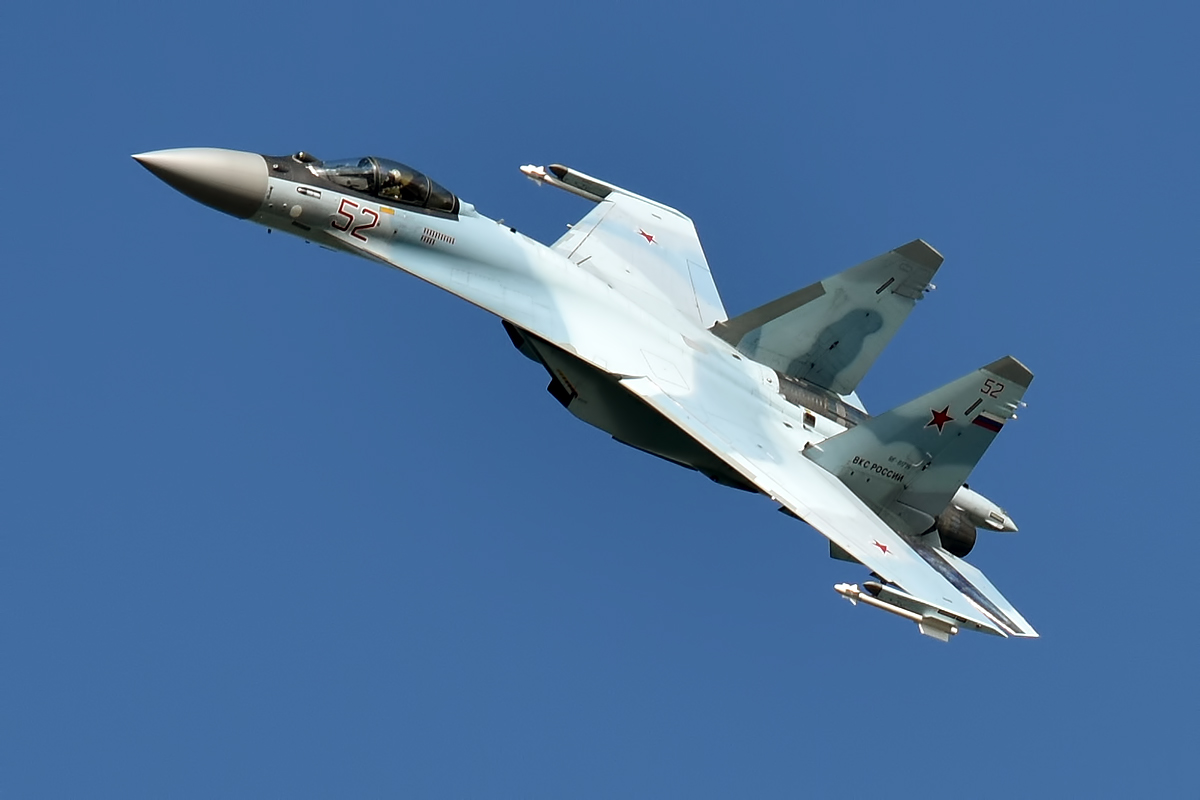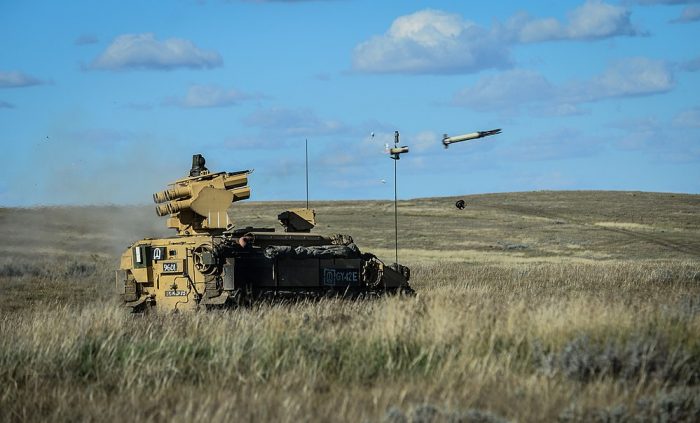Things seem to be getting worse for Russia as images of a burning Su-35 fighter jet that was shot down near the Kharkiv region were put online.
A video that has gone viral purports to show the moment the plane was shot down. A jet in flames can be seen plummeting from the sky before crashing to the ground and blowing up.
The Ukrainian Army has shot down a Russian Su-35 fighter jet over Izyum, near Kharkiv. pic.twitter.com/vLyWgaOAoF
— worldnews24u (@worldnews24u) April 3, 2022
The plane was shot down by an anti-aircraft missile from Ukraine’s Air Force, which posted the footage online. The news was also confirmed by Ukraine’s Deputy Interior Minister Anton Gerashchenko, who stated that the pilot ejected and attempted to escape, but was detained.
Experts believe that the pilot was conducting a SEAD mission – Suppression of Enemy Air Defenses – with his Su-35S Flanker-E. These are military strategies adopted by air forces throughout the world to suppress the enemy’s air defense by eliminating their anti-aircraft missile and radar capabilities.
Based on the remains found on the battlefield, experts agree that the Russian aircraft was aimed at destroying an air defense system. The video certainly displays the fragments of the Russian anti-radiation missile Kh-31 anti-radiation missile (ARM).
Su-35: Russia’s Most Advanced Aircraft
Russia’s single-seat multi-role attack jet SU-35s have outstanding maneuverability and thrust vectoring engines which enable them to turn considerably tighter than a standard aircraft, making them well fitted to air superiority missions. This aircraft is so technological advance that it is often classified as a 4th-generation “plus-plus” aircraft.
The plane can achieve Mach 2.25 at 36,000 feet, or around 1,500 mph, and can hold 8,000kg of weaponry with a range of about 1,000 miles. However, the Su-35s is not a stealth aircraft and relies heavily on dogfighting skills. Su-35 has a 30mm auto-cannon along with 17,630 pounds of payload on twelve external hardpoints.

It is capable of deploying a range of air-to-air, air-to-surface, anti-radiation, and anti-ship missiles, as well as video, laser, and satellite-guided bombs. Six short-range air-to-air missiles and twelve beyond-visual-range air-to-air missiles are typically carried by the aircraft.
A sophisticated avionics suite is also featured on the Su-35S. Depending on the target size, the modern Irbis-E passive electronically scanned array radar can track up to 30 objects at a range of roughly 217 miles.
With the Su-35 designed to operate in large squadrons and share target data through data links, the situational awareness for a full unit will be far greater than that for a single aircraft.
NATO Straightening Ukraine’s Defenses
NATO countries are regularly supplying weapons to Ukraine to help improve its defenses. On 1 April, a British anti-aircraft missile was reportedly used to shoot down a Russian helicopter. Videos show a Russian Mi-28N combat helicopter being struck by a Starstreak high-velocity missile system over the Luhansk region of eastern Ukraine.
⭕️??#Ukraine: ?? Russian Mi-28 helicopter was shot down today (on April 1,2022) pic.twitter.com/deXeV5fjOe
— ?-???? (@L_Team10) April 1, 2022
In March, the UK dispatched a consignment of Starstreak, Britain’s most sophisticated operated portable missile system (NLAWs). A British Ministry of Defense source told The Times of London that it believed the video showed Starstreak in action.
The missile has a top speed of Mach 4 (3,000 mph) and is the world’s fastest short-range missile. It can be fired from a stand or shoulder launcher and can hit targets up to 7 kilometers (nearly 4 miles) away. Three laser beam darts guide the weapon to its intended target.
The British Ministry of Defense has reportedly deployed a team of Starstreak operators and a simulator to a secret location in a neighboring nation for training to help Ukrainians learn the weapon, according to The Times.

Even though British operators intended to spend two to three weeks extensively training Ukrainian forces, its use in this incident implies that soldiers learned how to operate it in just one or two weeks.
Aside from that, reports are circulating that the United States will facilitate the delivery of T-72 tanks from NATO countries’ Soviet-era stockpiles to Ukraine. The possibility of a transfer was initially reported by The New York Times.
The development comes after Ukraine’s President, Volodymyr Zelensky, urged Western countries to provide military equipment, especially tanks, to Ukraine. However, British Prime Minister Boris Johnson stated that directly supplying Ukraine with tanks and aircraft would be “very difficult.”
- Contact the author at ashishmichel@gmail.com
- Follow EurAsian Times on Google News




